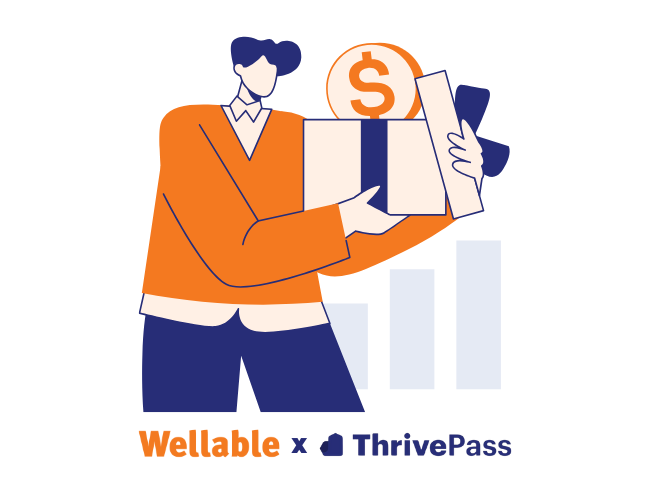Creating a culture of appreciation boosts employee engagement, retention, and productivity. While rewards and incentives programs and top-down acknowledgment have their place, peer-to-peer recognition adds a valuable dimension to recognition frameworks by empowering colleagues to directly celebrate each other’s contributions. This kind of acknowledgment fosters a sense of belonging and support, builds camaraderie, and aligns team members toward common goals.
What Is Peer-To-Peer Recognition?

Peer-to-peer recognition is the practice of employees acknowledging each other’s skills, hard work, and positive contributions. Unlike manager-driven recognition, this form of acknowledgment comes from those who experience the same challenges and victories daily. This relatability can make peer recognition feel more authentic and foster a culture of support among employees.
Why Does Peer-To-Peer Recognition Matter To Employees?
Employees are more likely to invest in the team and organization’s success when they know their peers notice and appreciate their contributions. Peer-to-peer recognition matters to employees because it:
- Fosters a sense of belonging: Celebrating unique contributions ensures every employee feels valued within the team. This promotes diversity and inclusion, strengthens emotional ties to the company, and cultivates comradery.
- Encourages skill development: Employees who are recognized for specific skills or achievements are more likely to pursue growth in these areas. Peer feedback makes it easier to identify strengths and opportunities for improvement.
- Boosts morale and reduces stress: Small acts of peer recognition can uplift spirits, especially during challenging projects or tight deadlines. When employees feel like their efforts are appreciated by coworkers, it eases stress and makes difficult tasks more manageable.
- Promotes a positive company culture: Consistent peer acknowledgment creates a culture rooted in appreciation and teamwork. By embedding recognition into daily interactions, employees feel supported and motivated, reinforcing a positive company culture.

The impact of peer-to-peer recognition extends beyond individual job satisfaction—it contributes directly to organizational success:
- Elevates engagement and productivity: Peer feedback can enhance performance by up to 14%. When employees feel seen and appreciated by those they work closely with, they’re motivated to go above and beyond.
- Improves retention: Lack of recognition is often cited as a top reason for employee turnover. Sixty-three percent of employees who are frequently recognized are less likely to seek new jobs in the near future.
- Increases profitability: Companies with robust peer recognition programs see up to a 21% increase in profitability due to higher engagement and productivity. An engaged workforce delivers better performance and customer experiences, ultimately driving growth.
7 Examples Of Peer-to-Peer Recognition
Peer-to-peer recognition can range from simple gestures to structured programs, including:
- Shout-outs in team meetings: Dedicate a few minutes during gatherings for employees to publicly recognize their peers. These informal but impactful moments facilitate collective celebration and promote positivity.
- Digital recognition boards: Implement a virtual “Kudos Board” where employees can post messages of appreciation for their colleagues. Platforms like Slack or Microsoft Teams allow recognition to be easily shared across the company.
- Handwritten thank-you notes: In a digital age, a simple, handwritten note can have a meaningful impact. Encourage employees to leave messages of appreciation on desks to strengthen bonds and add a personal touch to recognition.

- LinkedIn endorsements: Invite colleagues to endorse each other’s skills or write recommendations on LinkedIn, providing acknowledgment that enhances their professional reputation in the broader job market.
- Rewards from colleagues: Give employees a budget to send small gift cards or tokens of appreciation to colleagues. This personal “thank you” empowers employees to recognize each other in a meaningful, tangible way.
- Social media shoutouts: Celebrate employee achievements by posting on the company’s social media channels (with their consent). This recognizes the employee publicly and enhances the company’s image by showcasing its supportive culture.
- Recognition during coffee breaks: Establish “Coffee Appreciation Days,” where employees recognize one another’s contributions during a casual coffee break. Provide gift cards or designate specific times for teams to gather over complimentary coffee. This can be a relaxed way to blend recognition with team-building.
Best Practices For Peer-To-Peer Recognition
Without intentional practices in place, recognition often favors high-profile achievements; becomes infrequent, delayed, or impersonal; and can easily get lost amidst the hustle and bustle of work life. Effective peer-to-peer recognition celebrates quiet victories, spotlights behind-the-scenes contributions, and makes appreciation an integral part of daily work life.
1. Encourage Timely Recognition
Urge employees to celebrate their peers’ successes in the moment. When feedback is given immediately following an achievement, it reinforces the behavior and makes the employee feel valued in real time. Delayed feedback, while still beneficial, can lose some of its motivational impact. Integrating recognition into existing communication tools (e.g., Microsoft Teams, Slack) can reinforce immediacy by making acknowledgment quick and accessible.
2. Promote Specificity And Personalization

Specific, personalized recognition is far more meaningful than generic praise like “Great job!” Encourage employees to be precise about what they’re recognizing, such as calling out a creative solution or exceptional teamwork on a recent project. This kind of feedback shows that the recognition is genuine and based on real contributions, helping the recipient understand what they did well and why it matters.
3. Prioritize Inclusivity
Programs that only highlight top performers or highly visible roles may inadvertently exclude team members whose contributions are often less visible but just as vital (e.g., those in support or administrative positions). Remind employees to recognize contributions made across all roles so that appreciation reaches every corner of the company.
Additionally, be mindful of balancing public and private recognition. While public acknowledgment can boost morale and set positive examples, some employees may feel uncomfortable in the spotlight. Offering options for private recognition guarantees that team members feel appreciated in ways that respect their comfort and personal preferences.
To guide employees toward creating meaningful, personalized, and inclusive acknowledgments, encourage them to link their recognitions to:
- Projects or tasks: Recognizing contributions tied to specific projects or tasks makes praise more concrete. Encourage employees to consider all roles involved in a project’s execution to highlight how collaboration fuels success.
- Qualities and skills: Celebrating a range of qualities (e.g., teamwork, creativity, resilience) ensures employees feel valued for diverse contributions, not just high-profile achievements. This breadth of recognition fosters an inclusive culture where diverse strengths are appreciated.
- Company values: Tying recognition to company values (e.g., collaboration, integrity) strengthens organizational culture by aligning individual actions with the organization’s mission.
4. Create Recognition Rituals
Peer-to-peer acknowledgment should be an anticipated practice rather than an occasional gesture. However, only 25% of companies give recognition frequently. Recognition rituals can get the ball rolling by ensuring everyone has regular opportunities to participate. Implement rituals by:
- Establishing “Recognition Fridays,” where team members post shout-outs on the company’s recognition platform or send a private message to a colleague who went above and beyond
- Beginning team meetings with “wins of the week,” where employees can highlight each other’s accomplishments
- Including a “Recognition Corner” in internal newsletters to share peer-to-peer highlights from the past month
These rituals make appreciation a core part of company culture, gradually turning it into an everyday practice. However, when integrating structured recognition, it’s important to ensure that it’s voluntary, as mandatory acknowledgment can feel superficial and inauthentic.
5. Celebrate Personal And Professional Milestones

Work anniversaries, birthdays, and personal achievements (e.g., completing a certification, running a marathon, celebrating a major life event) are ideal opportunities to show employees that their individuality and growth are important. These celebrations are especially impactful when they’re acknowledged by peers, as they reinforce personal connections and highlight the importance of achieving milestones inside and outside of work. Have everyone sign an e-card or digital note with a personalized message to make the recognition feel collective and meaningful.
How To Implement Peer-To-Peer Recognition In Your Organization
Take the following steps to set up and sustain a successful peer-to-peer recognition program:
- Use a recognition platform: Companies that use communication tools like Microsoft Teams or Slack can create a dedicated recognition channel for employees to post shout-outs for colleagues. This encourages them to integrate small acts of recognition within their workflow.
- Train employees on best practices: Only one-in-three organizations train their staff on how, when, and why to recognize their peers. Conduct brief training sessions on peer recognition best practices (e.g., being timely, specific, and inclusive), ensuring appreciation is thoughtful and authentic.
- Lead by example: Leadership should actively participate in peer recognition and encourage employees to follow suit. When leaders recognize employees for exemplifying company values or achieving milestones, it sends a strong message that appreciation is an organizational priority.
- Evaluate and evolve: Measure participation rates and gather employee feedback to assess the program’s impact and make regular improvements. Adjustments might include updating platform features or creating new ways to celebrate specific achievements.

Implementing a peer-to-peer recognition program fosters a workplace culture of appreciation, inclusivity, and engagement. By thoughtfully designing the program and applying best practices, employees will feel valued as team members and motivated to do their best work. With the right framework in place, peer recognition eventually becomes a part of your organization’s identity, where appreciation is embedded into daily interactions and company culture.












